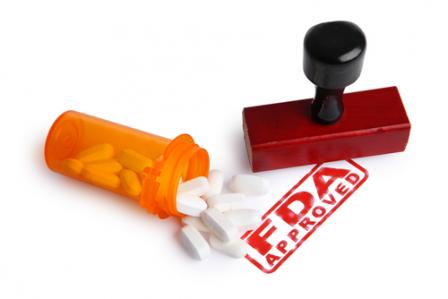Is the New “Pink Viagra” Safe?
The FDA just approved the first prescription drug to target low female libido, after failing to pass twice before. How safe is flibanserin (referred to as the “Pink Viagra”), and how does it really work?
As a doctor, one of the challenges of practicing medicine includes those ailments that I simply cannot fix or even help alleviate. Female libido and low sexual desire is one of those very pervasive and potentially frustrating issues that has remained medically untreatable.
But now, finally, a seemingly major milestone has been achieved in female sexual health in the recent past: the FDA just approved the first prescription drug to boost female libido this month. But the FDA also rejected the drug twice, in 2010 and 2013, due to concerns with patient safety outweighing its potential benefits in the past. And it has now only been FDA approved with stringent safety restrictions.
Why is that? How safe is it? How does it work? Let’s find out.
What Is “Pink Viagra”?
They may be calling it the “Female Viagra,” or “Pink Viagra,” but flibanserin (otherwise known as brand “Addyi”) is nothing like Viagra. It actually works on the chemical in the brain called serotonin. By changing the serotonin activity in the brain, it reportedly helps to boost sexual desire … but not immediately. You can’t simply take it “as needed” an hour before sexual activity like with Viagra; similar to antidepressants that work on serotonin receptors, which take weeks to take effect, this drug also takes weeks to months of daily use for someone to notice a change.
And the reported change has been said to be merely a mild one, with only an increase of one sexual event per month. Not very life-changing for most.
The drug manufacturer has also reportedly created a campaign to pressure FDA approval for the third time, gaining audiences this time by claiming FDA gender bias in failing to treat female conditions like sexual dysfunction. Meanwhile, the company also yearned to reach the same immense monetary success that Viagra yielded. It’s important to note, however, that male erectile dysfunction is a much more targeted and specific medical condition to treat by simply increasing penile blood flow. Viagra is not effective in men with low libido, only those with a problem with maintaining erections.
But low libido in women is a much more complex and less definable issue. Female sexual dysfunction is often due to numerous factors that all contribute to the process, and therefore less specific and more challenging to target. These factors can include:
- depression and anxiety
- life stressors
- interpersonal conflict between the couple
- medication side effects
- age
- religious concerns
- personal health
- privacy issues
- personal body image
- substance and alcohol abuse
- hormonal influences
Who Should Not Take Flibanserin?
The drug is not FDA approved for just any woman yearning for their mojo . It is not intended for women who are:
- Postmenopausal;
- Depressed or have a mood disorder, or psychiatric reason for their low libido;
- Having marital or interpersonal relationship issues;
- Having a co-existing medical condition causing a low libido;
- Taking a medication or any substance contributing to a low libido; or
- Experiencing low sexual desire that is not distressful or interfering with quality of life.
You may be wondering what #6 above is all about. Well, low libido in women is very common—up to 50% of women report it. And it is also considered very normal, and doesn’t not require treatment in most women. Therefore, true female hypoactive sexual disorder only pertains to symptoms that are severe enough to be distressful to the patient and/or impairing quality of life. This is subjective, and pertains to about 12% of women.
In addition, because of the serious side effects, pharmacies who dispense it and doctors who prescribe it, must first be certified and trained to do so. That means that your doctor may not be able to prescribe the drug unless they undergo specific training prior.
Black Box Warnings And Common Side Effects
Several Black Box Warnings (the most serious types of side effects) have been released by the FDA, and patients should be aware of the drug’s potential consequences:
- It can cause very low blood pressure (hypotension) or fainting (syncope). If you already suffer from these two medical conditions, then you may want to think twice about taking it.
- Drinking any alcohol while on this drug can increase the risk of low blood pressure and fainting. Therefore, abstaining from any alcohol is required when taking this drug. Ladies, if you can’t give up alcohol, then this one is not for you.
- Those with any liver problems or taking certain medications that are heavily metabolized by the liver also increase the risk of severe low blood pressure and fainting, and are therefore contraindicated.
The most common (not the most serious) side effects include:
- Drowsiness
- Insomnia
- Dizziness
- Nausea
- Fatigue
- Dry mouth
Patients and prescribers are encouraged to report all adverse reactions to: www.fda.gov/MedWatch or by calling 1-800-FDA-1088.
It’s also important to note that patients are advised to discontinue the drug if no improvement is seen after eight weeks of use. Anticipated availability of the drug on the market is October 2015.
Share your ideas and learn more quick and dirty tips with us on the House Call Doctor’s Facebook and Twitter pages! You can even find me on Pinterest!
Please note that all content here is strictly for informational purposes only. This content does not substitute any medical advice, and does not replace any medical judgment or reasoning by your own personal health provider. Please always seek a licensed physician in your area regarding all health related questions and issues.
Image courtesy of Shutterstock.







